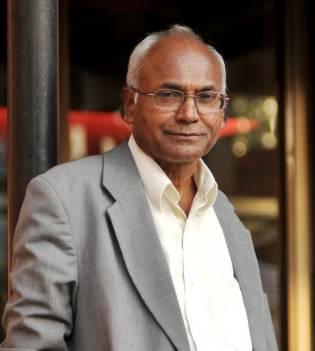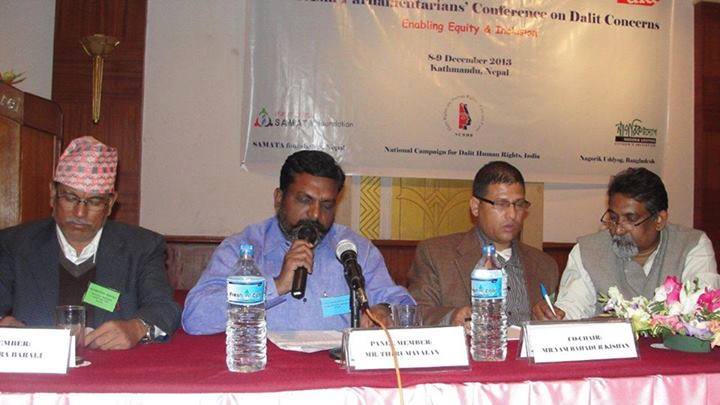Kancha Ilaiah
 There are two prominent stories around the celebration of Diwali. One, this is the day on which Ram returned to Ayodhya and coronated himself as king after killing Ravan. It is also the day when Krishna and his wife Satyabhama killed Narakasur, known as the evil rakshasa. It’s the death of the enemy that is celebrated.
There are two prominent stories around the celebration of Diwali. One, this is the day on which Ram returned to Ayodhya and coronated himself as king after killing Ravan. It is also the day when Krishna and his wife Satyabhama killed Narakasur, known as the evil rakshasa. It’s the death of the enemy that is celebrated.
Perceptions differ from north and south India about Ram killing Ravan and Krishna killing Narakasur. Diwali day just does not remain a day of lighting lamps, wearing new clothes, worshipping whom one considers god, but also burning massive amount of crackers that pollute the atmosphere so much so that even the health of the forces that keep celebrating would also get damaged. The emissions in urban areas on that day rise to the level of choking people. And several people, especially children, die because of fires and pollution.
Let us first see the Ram narrative on which this festival is based. The reason why a festival gets celebrated and the way it is celebrated is very important for building an inclusive society and nation. Nothing wrong if a nation or a section of the nation celebrates Ram’s birthday or coronation day. But why burn Ravan’s effigies on that day?
Ravan as mythological figure is owned and venerated by a section of Dravida/Shudra/
dalit/Adivasis. None other than Mahatma Phule, Periyar Ramasami Naikar and B.R. Ambedkar presented a different image of Ravan. Should then the office of the Prime Minister hurt the sentiments of historical victims, who were born in castes/tribes that get castigated as bad people or people who respect Ravan.
The Dravidians and dalit-Bahujans across the country treat Ravan as their representative. His action of abducting Sita was seen by them as an answer to mutilating the beautiful body of Shurpanaka, his own sister, by Lakshman at the instance of Ram himself. Further, he did not physically assault Sita at all. They see Shurpanaka and Sita as women who have equal rights for their dignity and self respect. Why demonise Ravan alone?
We know that mythologies are constructed by the dominant caste/class writers, not only to sustain their dominance but to subvert the emerging knowledge and identities of the historically oppressed people. The view that Ravan is a representative of Dravidian/dalit-Bahujan masses has been growing over the years. Of course there are multiple readings of Ramayana and different ways to understand the characters of that story. So also of Ram. The notion of dharma and adharma too differ from class to class and caste to caste. Those who want to worship Ram have the right to worship him, but similarly, those who want to worship Ravan or admire him have the right to do so as well.
A secular state must, thus, maintain its neutrality. If state functionaries attend the burning of Ravan’s effigy they are sanctifying the culture of historical partisanism. They are then joining the ranks of the oppressors.
Similarly, Deepawali (as it is called in the south) is also the day when Krishna killed Narakasur. Narakasur is seen as a representative of Dravidian adivasis because he represents black sturdiness, which is a part of Dravidian warrior heritage. Why should any death be celebrated? If terrorists celebrate the brutal killing of Rajiv Gandhi, men who perceived him as the man responsible for deaths and devastation in Sri Lanka, how will we respond? For Indians Rajiv Gandhi was a good man, but for Sri Lankan Tamils he was a bad man. For this historical event the reply is not killing Prabhakaran and celebrating his death in India. Even for Khalistanis who killed Indira Gandhi, she was a bad Prime Minister. If the Khalistanis celebrate the killing of Indira Gandhi with burning of crackers and lighting of lamps how do we feel?
Such events of killing and counter-killing should not become occasions for celebration that will only serve to remind representative groups of their inimical relationship. And even if wrong cultural practices continue as festivals, the state must remain aloof. The images of Ravan and Narakasur and so on were not seen as their heroes by the Dravidian masses till Mahatma Phule’s writings and activism came to play a significant role among their lives. Now they treat Ravan, Naraka, Bali as their un-Hindu heroes. Why not the other civil society respect their view of history?
We now have definite scholarly groups to own the representative images of Ravan and Narakasur. At least this must make people re-think the narrative of why we celebrate Diwali/Deepawali as festival of death but not life.
When Christians started celebrating the birthday of Jesus, as a counter the Pharisees who killed him started celebrating his crucifixion day. Gradually they understood the cruelty of their celebration and a day came in human history that the successors of Jesus’ enemies began to celebrate his birthday. Now Christmas is the biggest celebration in the world. Let those Indians who like to celebrate Ram’s persona fix some day as his birthday and celebrate it with lights, new clothes, good food and so on. So also for Krishna — Janmashtami. Nobody has a problem with that.
It’s only the evil, cruel mind which wants to celebrate death. Mahatma Phule was of the view that historically the Shudras and Ati-Shudras never celebrated death or murder. But now Diwali celebration has extended to them too. In a multi-cultural nation we all should protect everybody’s right to worship birth, not death. We should celebrate creativity and productivity, not destruction.
The writer is director, Centre for the Study of Social Exclusion and Inclusive Policy, Maulana Azad National Urdu University, Hyderabad.
~~~
[Courtesy: The Asian Age, November 1, 2013]









